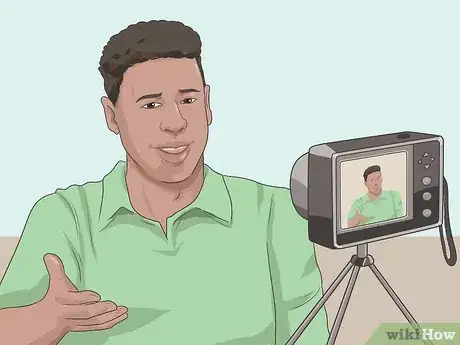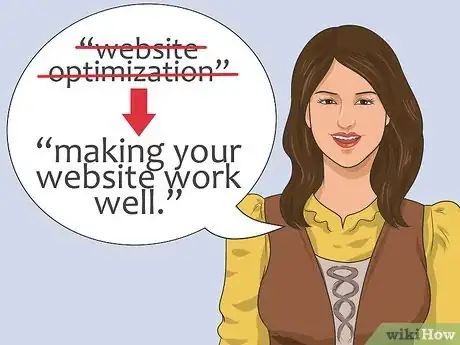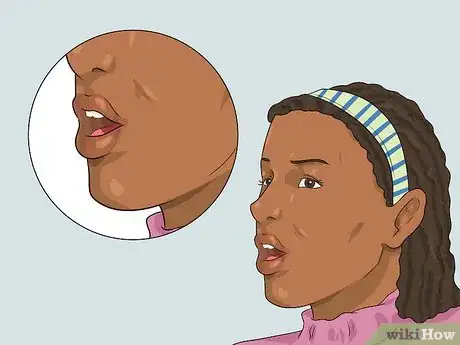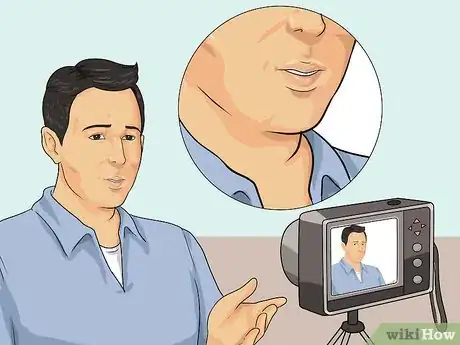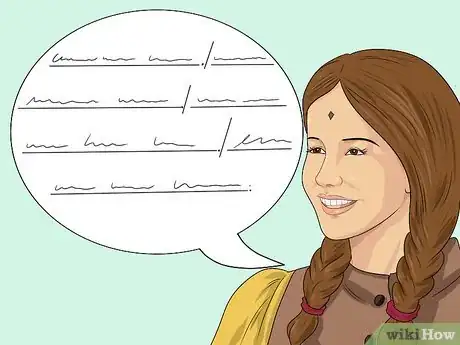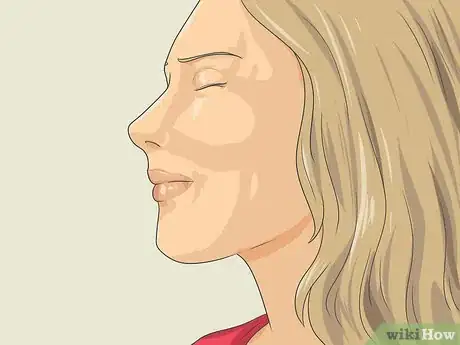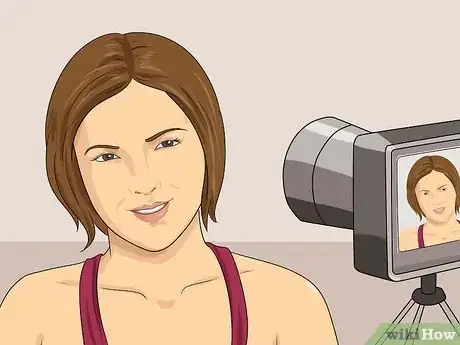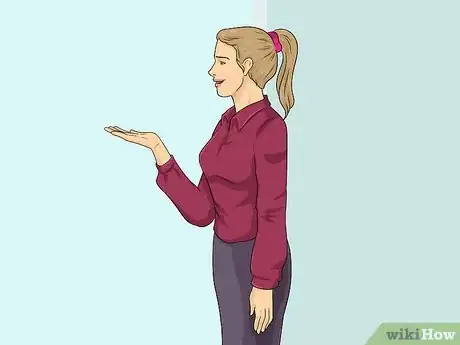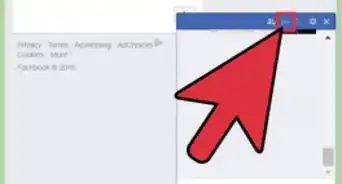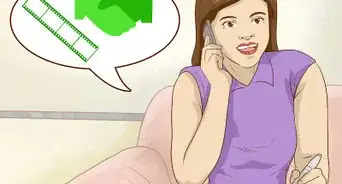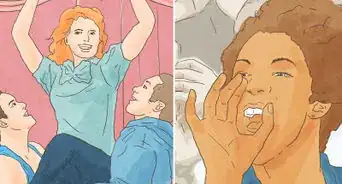This article was co-authored by Patrick Muñoz. Patrick is an internationally recognized Voice & Speech Coach, focusing on public speaking, vocal power, accent and dialects, accent reduction, voiceover, acting and speech therapy. He has worked with clients such as Penelope Cruz, Eva Longoria, and Roselyn Sanchez. He was voted LA's Favorite Voice and Dialect Coach by BACKSTAGE, is the voice and speech coach for Disney and Turner Classic Movies, and is a member of Voice and Speech Trainers Association.
This article has been viewed 57,114 times.
Many people talk to cameras for work, business, or to communicate with friends. Making videos is easy to do, but developing skills for talking to a camera can take practise. With a few tips, some thought about how to plan your video, and a little bit of practise you can improve your on-camera talking.
Steps
Practising With a Camera
-
1Practise speaking in front of the camera. Just try to get used to speaking to the camera. Having a chance to do this a bunch of times will give you some basic experience and level of comfort.
- Don't worry too much about the small details at first, just get some time talking to the camera under your belt.
-
2Record yourself. Record yourself practising so that you can play it back and see how you look and sound.[1] Try to speak in your normal speaking voice.Advertisement
-
3Pretend you are talking to a friend. Look into the camera lens and pretend it is your best friend. Try to forget about who might watch the video and think about your best friend watching.[2]
- Thinking about talking to a friend can make your video warmer and more relaxed.
-
4Put your practise videos online. Put a few practise videos on YouTube or another online video site. Tell the audience that they are videos of you practising speaking to a camera and ask for advice from viewers.[3]
- Some critiques may be tough but focus on constructive comments.
- Over time you will get more comfortable with the process of speaking to the camera, posting videos, and getting feedback.
Crafting Your Speech
-
1Plan your speech. Think about what you are going to say and make an outline of the main ideas. You don't need a complete script but it helps to have a plan to make sure you cover the main points.
- Planning the order of ideas will make your speech clearer and help with nerves.
-
2Use plain language. Avoid words that most people don't know including long and unusual words and words that are specific to your area of work or expertise. [4]
- If the subject you are talking about has a lot of jargon or insider language, try to use everyday language instead.
- Avoid acronyms or nicknames.
- Instead of "website optimization," say "making your website work well."
-
3Enunciate properly. Mumbling people can't be well understood, and the video-watcher might even stop watching your video.[5] Pronounce the words clearly and correctly. If you're not sure how to say a word, either look it up or don't say it at all.
-
4Speak slowly. Many people talk too fast when they become nervous. Make sure to talk slowly enough that your audience can follow your ideas.[6]
-
5Choose short, clear sentences. Short sentences are both easier to say and easier to understand. If it takes a long time for you to complete a sentence, your viewer may lose track of your point.[7]
- Use each sentence to convey one brief idea.
- Longer sentences are hard to say because you may run out of breath. Shorter sentences will make your speech seem more natural.
- People watching videos may be doing other things, like eating lunch. Keep your ideas short and clear to hold attention.
-
6Take a breath first. Before you begin talking take a few deep breaths.[8] This will calm your nerves and help you breathe more naturally as you speak.
Looking Great While Talking
-
1Make eye contact. Look into the camera lens so that you will make eye contact with your audience. This will help you connect with your viewers.[9]
- Feel free to look away from the camera to direct attention and make your video feel natural.
- Look at other people in the video, if there are any, to direct attention to them when they are speaking.
- Look at objects you are discussing. If you are holding or showing off a product, look at the object while speaking about it.
-
2Choose a background. Make sure you are standing in front of a background that looks good. Pick a background that is clean and not distracting.
- The background should be static. If things behind you are moving around it will be distracting.
- The background can convey a setting. A bookshelf behind you will be more interesting and important looking than a blank wall without being too distracting.
-
3Dress appropriately. Wear clothes that match with the subject you are talking about and the purpose of your video.[10]
- If your video is business related, wear the clothes you would wear when doing business.
- For a friendly video about making new friends, wear the clothes you would wear when hanging out with friends.
- Avoid any clothes that are distracting such as clashing colors or complicated patterns.
-
4Use body language. How you hold your body and arms can make a big difference.[11]
- Stand up straight and hold your shoulders back to look reliable and confident.
- Stay balanced. Don't shift your weight from side to side or fidget.
- Gesture with your hands to direct the viewer's attention, or to convey emotion and emphasis.
- Keep your hands visible. Putting your hands in your pockets or behind your back might make you look nervous or untrustworthy.
References
- ↑ Patrick Muñoz. Voice & Speech Coach. Expert Interview. 12 November 2019.
- ↑ http://www.suzemuse.com/2011/05/camera-shy-you-dont-have-to-be/
- ↑ http://www.forbes.com/sites/tjwalker/2012/02/16/how-do-i-get-comfortable-and-more-confident-in-front-of-the-camera-for-my-video-segments/
- ↑ http://www.personalbrandingblog.com/tip-9-for-making-great-video-how-to-talk-on-camera/
- ↑ Patrick Muñoz. Voice & Speech Coach. Expert Interview. 12 November 2019.
- ↑ Patrick Muñoz. Voice & Speech Coach. Expert Interview. 12 November 2019.
- ↑ http://www.personalbrandingblog.com/tip-9-for-making-great-video-how-to-talk-on-camera/
- ↑ Patrick Muñoz. Voice & Speech Coach. Expert Interview. 12 November 2019.
- ↑ http://wistia.com/blog/10-tips-for-looking-great-on-camera



